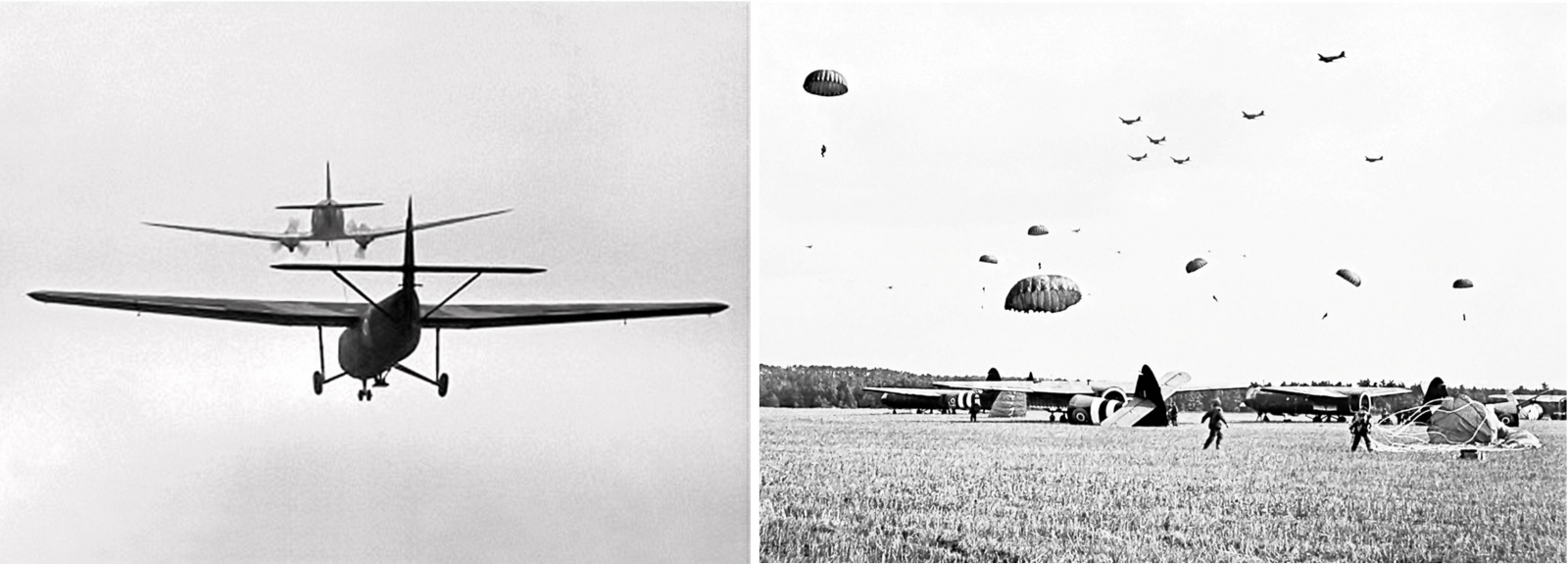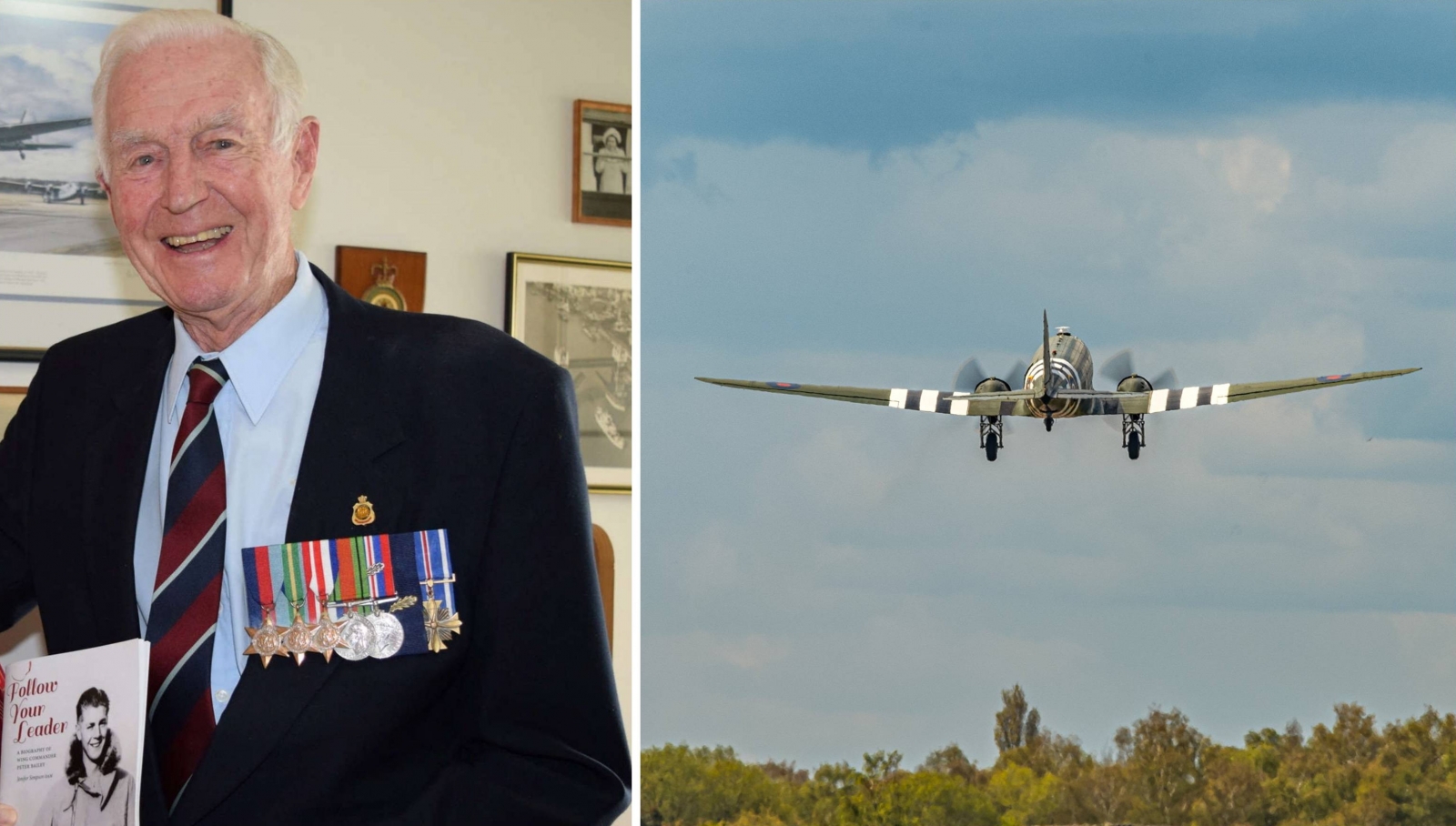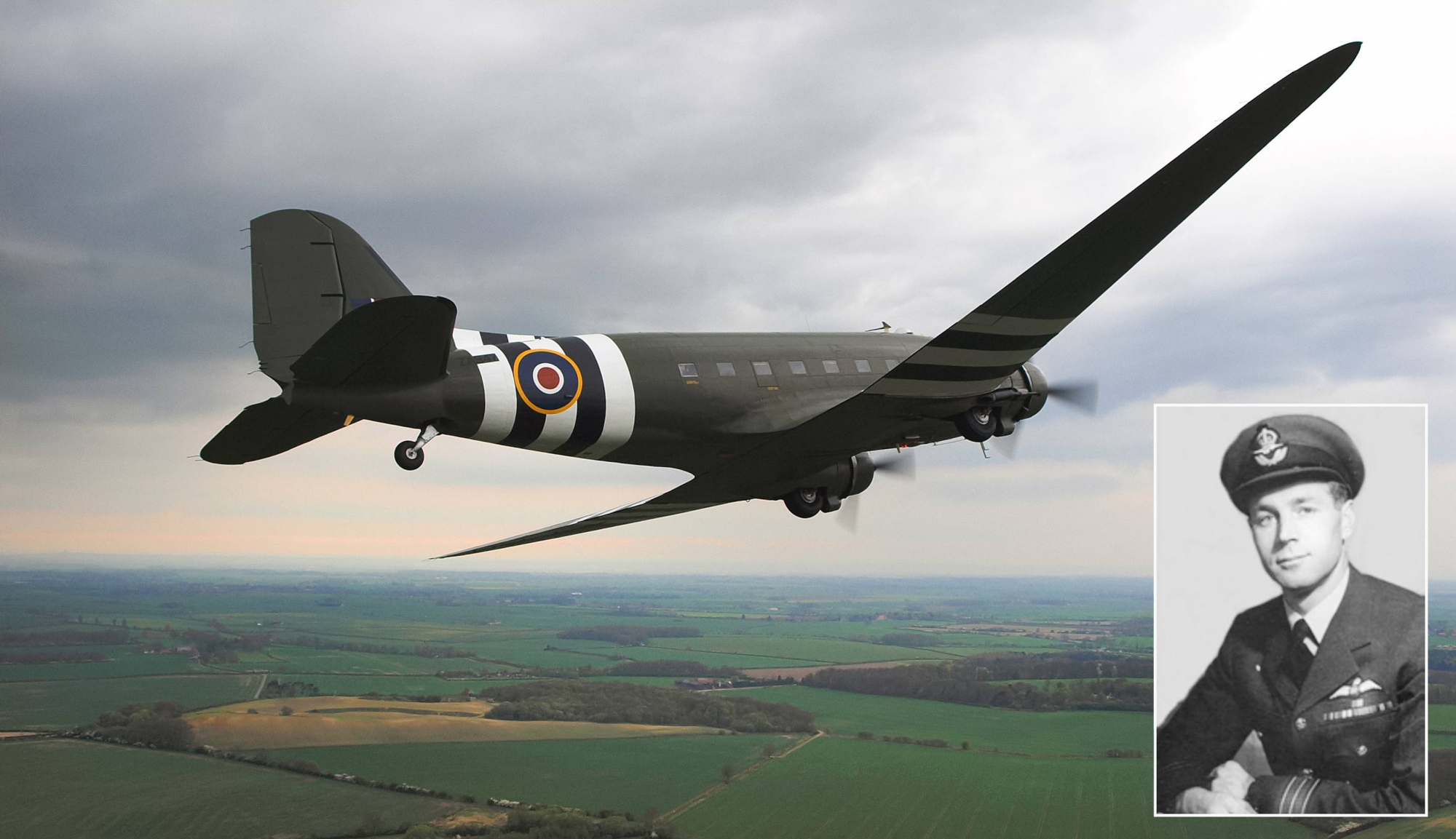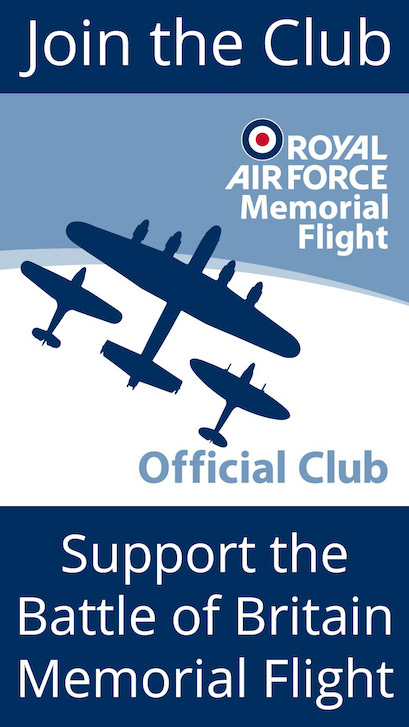Wg Cdr Peter Bailey – 233 Sqn Dakota pilot
Header image: BBMF C-47 Dakota ZA947 in its current 233 Sqn D-Day livery. (Photo: Jarrod Cotter). Inset: Wg Cdr Peter Bailey, who flew Dakotas with 233 Sqn during the Second World War.
Regular followers of the BBMF will know that the Flight’s C-47 Dakota ZA947 is currently painted to represent a Dakota of 233 Squadron during the D-Day period in 1944. It has come to our attention that one of the last 233 Squadron Dakota pilots to have participated in those operations, Wing Commander Peter Bailey, passed away peacefully in Queensland, Australia, on 14th April 2021, at the age of 99.
British born Peter Bailey joined the RAF in 1941 and trained as a pilot in Canada. After gaining his pilot’s ‘wings’, and being assessed as above average, he remained in Canada as a flying instructor until the end of 1943, when he returned to Britain and converted to the Dakota. He joined the recently formed 233 Squadron at RAF Blakehill Farm and began training for operations with the airborne forces.
Just before 11pm on 5th June 1944 – the eve of D-Day – the then Warrant Officer Bailey flew one of six 233 Squadron Dakotas towing Horsa gliders across the Channel to a drop zone near Touffeville, in Normandy. Twenty-four other Daks from the squadron dropped para-troopers. Peter Bailey later said: “We didn’t have fighter protection because it took place at night and we didn’t have any armament at all. Over the Channel we could see an armada of ships. The job we were doing was considered so dangerous that they issued us all with American flak suits, but they were cumbersome and uncomfortable to wear. So I used to fold mine up and sit on it because I figured if anything was going to get me, it would be coming from underneath. We were shot at from the ground on the way in and on the way out.” Of the 30 Dakotas of 233 Squadron launched on Operation TONGA, as this was named, two were shot down and several more were damaged by ‘flak’.
The following night, on Operation ROB ROY, the 21 Dakotas of 233 Squadron that could be patched up and made serviceable, dropped supplies to forces of the British 6th Airborne Division east of the River Orne. Bailey later said: “This time we didn’t have the advantage of surprise, so we were shot at and badly damaged, but, happily, we didn’t catch fire.” Two more of the squadron’s Dakotas failed to return from this operation.

From mid-June 1944 Bailey flew into hastily-prepared airstrips in Normandy carrying war supplies and returning with casualties. At the end of August he flew on three consecutive days to an airfield near Paris carrying food for the local population. By September he was taking ammunition to airfields near Brussels. On 17th September, the first day of Operation Market Garden, Bailey towed a Horsa glider to a landing zone west of Arnhem. During the next few days, Bailey flew re-supply missions to the 1st Airborne Division at Arnhem and met intense anti-aircraft fire. For his service during the airborne operations he was awarded the American DFC.
After the war Bailey remained in the RAF as a Dakota pilot and later as an instructor. During the Berlin Airlift in 1948-49 he flew 250 re-supply sorties into the beleaguered city in Dakotas from Lubeck. Subsequently, he flew with the Royal Australian Air Force VIP transport squadron on an exchange tour, he then commanded 80 Squadron at RAF Laarbruch in Germany, flying Canberra PR.7s in the photo-recce role, and later commanded the RAF’s VIP transport squadron at Northolt. He retired from the RAF as a Wing Commander in 1970 and eventually emigrated to Australia.
RIP Wing Commander Peter Bailey, born 28th March 1922, died 14th April 2021.








